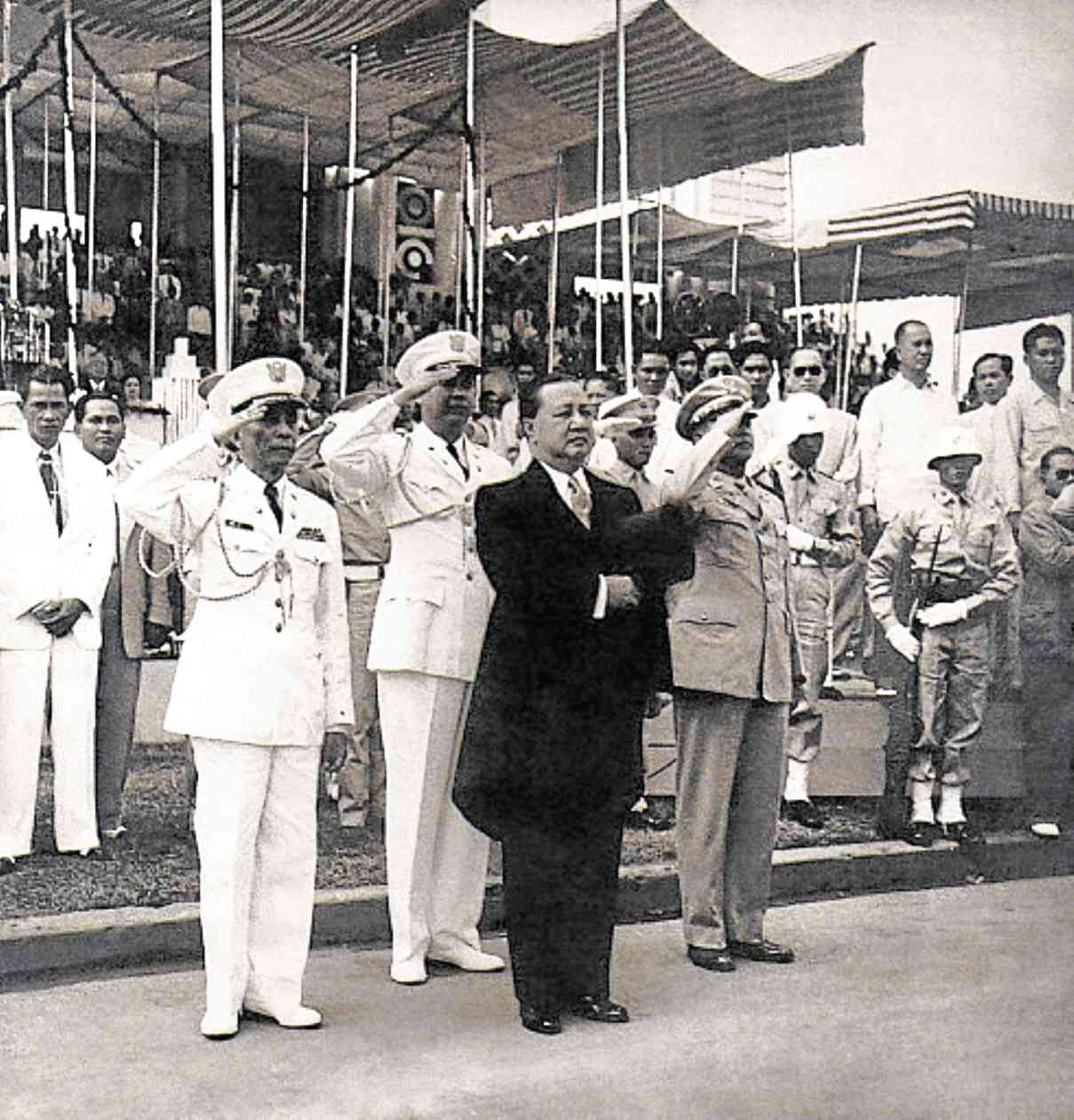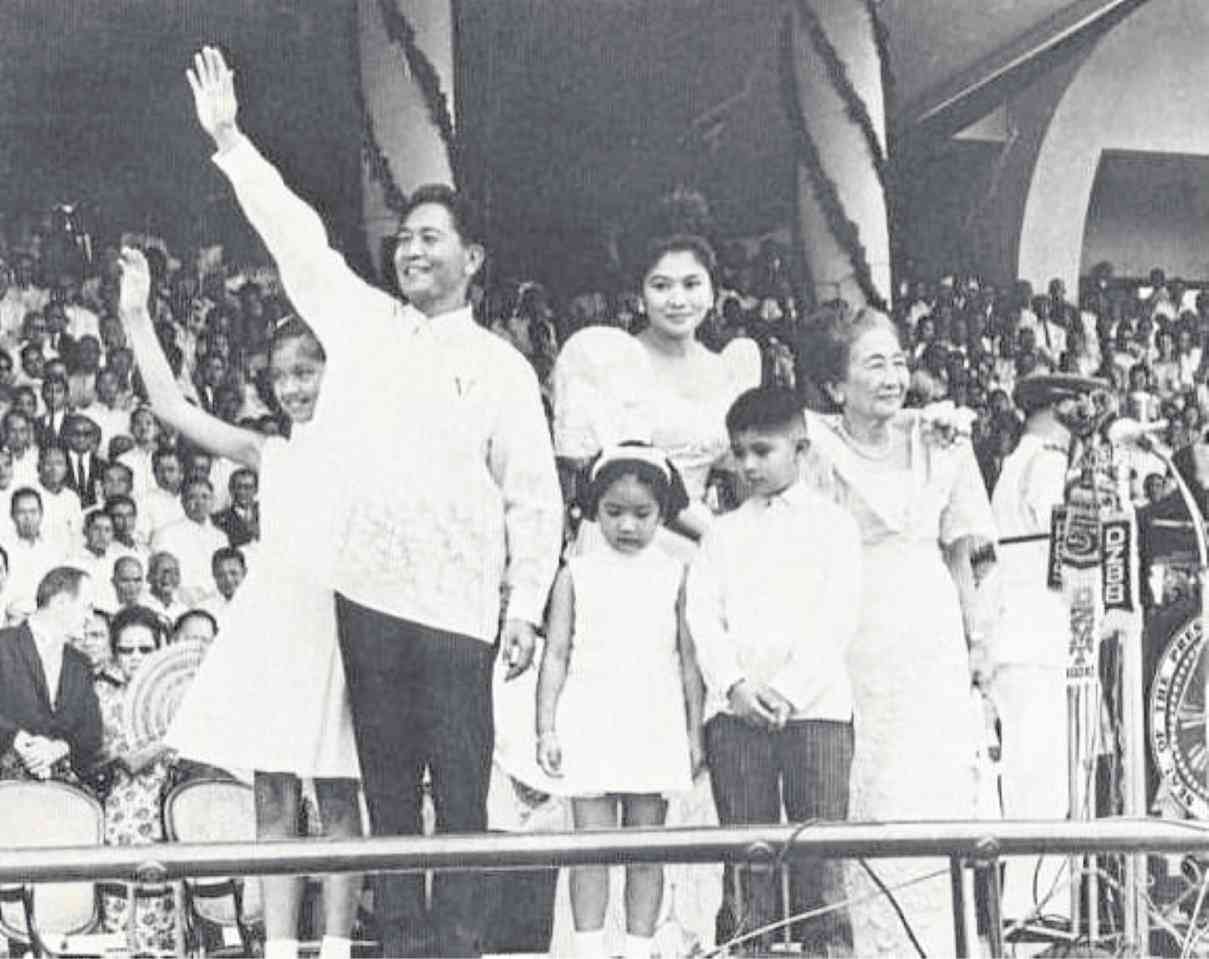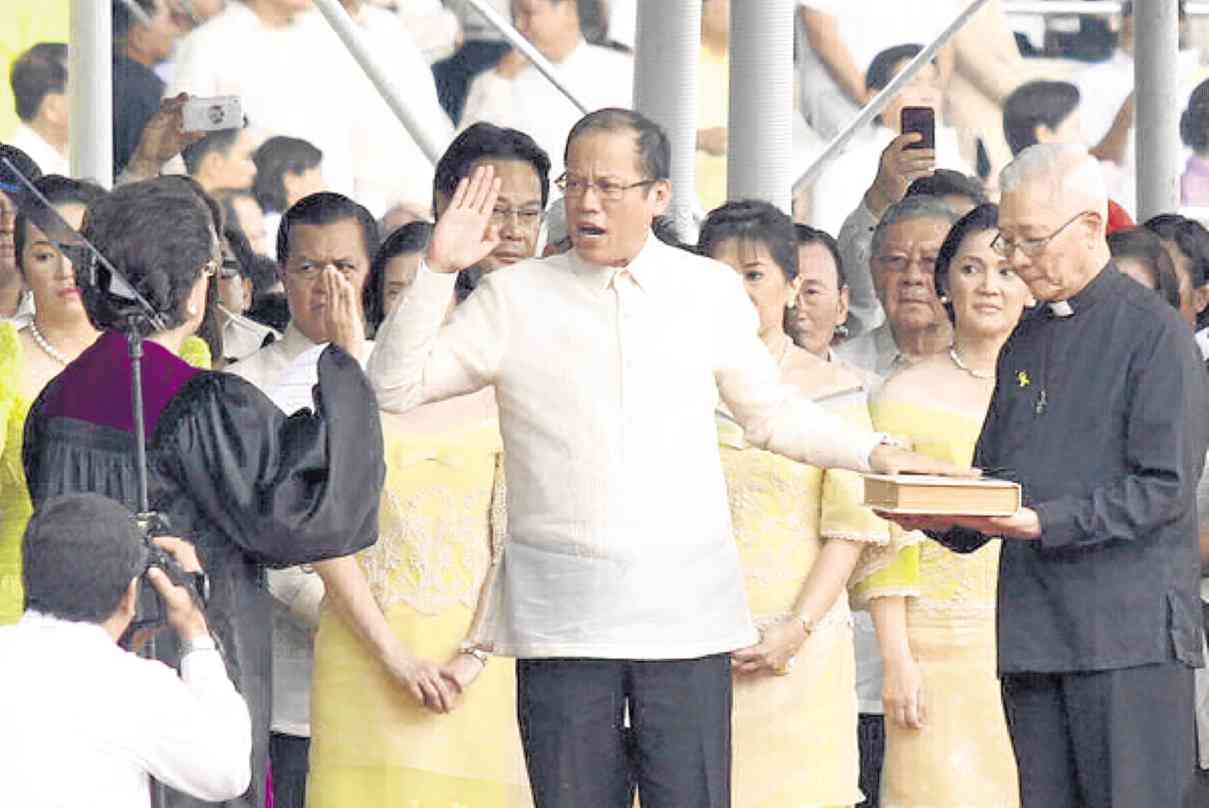On June 30, President-elect Rodrigo Duterte will make his first official appearance.
For most of the 20th century, we have replicated the American Inaugural rites.
The President will take his oath before the Chief Justice. The new President, one hand on the Bible, will swear to uphold the 1987 Constitution. (Never mind that a campaign promise was the rewriting of the Charter.)
Witnessing the event will be top members of the judiciary, new leaders of both houses of Congress; officials of the Executive branch; and the new President’s family.
And then he will address his first pronouncements as President to the Filipino people.
Knowing cameras will be trained on them, the men will don their best duds, and the women, their long dresses even at high noon. They will suffer hours fidgeting in the humid heat as they pretend to listen to the new President speak.
Not Luneta
But the Duterte Inauguration, if we go by initial impressions of the man, may not have the expected pomp and pageantry.
The Presidential Inauguration was not always held at the Luneta.
The first President was Andres Bonifacio. The General Assembly of the Katipunan convened in Balara on Aug. 24, 1896 and declared the formation of the revolutionary Government of the Sovereign People, forming a Cabinet and electing a pangulo.
He addressed the revolucionarios, setting forth their goals: to set up a government of the people, and break away from Spain. Everything was of course, on the run. It was more important to be carrying a revolver or a bolo than wearing fancy clothes.

Aguinaldo’s stylist
It was President Emilio Aguinaldo who set the bar for that. His Inauguration on Jan. 23, 1899 at Barasoain Church, in Malolos, Bulacan, was in the presence of the newly appointed Congress of the Republic.
Perhaps his stylist was Pedro A. Paterno, the erstwhile maharlika who basked in the good life in Paris. (Did he have a say on the pseudo-French menu?)
Aguinaldo wore a white tie, a coat with tails and a top hat. He rode on an open carriage from the Malolos Pariancillo, accompanied by Apolinario Mabini (in a light colored suit), and some other dignitaries.
They rode through the large plaza, where ranks of soldiers stood at attention, the crowd shouting “Viva! Viva!”
A hundred years later, President Joseph Ejercito Estrada ceremonially appeared at Barasoain, but made his inaugural address at Quirino Grandstand in Manila.
Following Washington practice, Presidents Manuel L. Quezon, Jose P. Laurel and Manuel A. Roxas were sworn in at the driveway podium of the Legislative Building (now reverted to the National Museum).
During the Pacific War, Quezon’s second inauguration, was in Corregidor and his third in his hotel in Washington.
President Sergio Osmeña was sworn in at the American colonial Office of the Resident Commissioner in Washington.
Vice Presidents Elpidio Quirino and Carlos P. Garcia, taking over from Presidents suddenly deceased, were first sworn in at the Council of State Room in Malacañang,
Vice President Gloria Macapagal Arroyo took her oath at the Edsa Shrine when Estrada stepped out. Nevertheless, all three were properly sworn in in the grandstand at the Luneta when they were subsequently voted President.
President Ferdinand Marcos was sworn in a fourth and last time on Feb. 25, 1986 at the Ceremonial Hall in Malacañang, the same time that Corazon Aquino took her oath at the Club Filipino in San Juan.
Presidents Ramon Magsaysay, Fidel V. Ramos and Benigno Aquino III held Inaugural rites at the Qurino Grandstand. That was where the majority of Presidents did so, recognizing that while one could declare that change is coming, it means nothing of itself, but must be measured against what came before.
The Inauguration can take place anywhere, but we must be conscious of place not only in the geographical, but more importantly, in the historical, sense.
At the Luneta, the new President addresses the people facing the east, where the sun rises, and Rizal, who gave his life that this nation may rise.

Malacañang
At this writing, in a post-midnight press conference, the incoming President said that plans were for his inauguration to be held at Malacañang.
Inside the complex, there are several places where such a ceremony could be held:
The grandest and most intimidating space is the Rizal Ceremonial Hall (constructed by Imelda Marcos as the venue for a silver wedding anniversary). It has a multi-dome coffered ceiling and huge carved wood chandeliers. It is on the second floor, reached from the grand staircase and through the Reception Hall (the original ballroom) with its sparkling Bohemian crystal chandeliers.
Below the Ceremonial Hall is the ground-floor Heroes’ Hall, which is as large in terms of floor area, but low-ceilinged.
There is the Old Executive Building, now the Kalayaan Hall. Vice Presidents Quirino and Garcia took their quick oaths inside their just deceased predecessor’s office.
Marcos was sworn in for his short-lived fourth and last term before the second-floor French doors overlooking the circular driveway.
Across the main entrance to the Palace is the Premier Guest House (now Bonifacio Hall). The modest glass-faced structure was used as offices by Corazon and Benigno Aquino III, and residence by Estrada. The Guest House has a two-story-high
reception area that could accommodate a couple of hundred people.

Suit
The President-elect had remarked that he might not wear the barong to his Inauguration because it would be uncomfortable, and disparaged it as casket wear. But all rituals are theater, and he who would be President must look the part.
In 1935, the country was preparing to take its place among nations. Quezon wore a formal frock suit with a white vest and dress shirt with winged collar. Quirino, like Aguinaldo and Laurel, wore white tie; they wanted the civilized world to take them seriously.
Roxas, faced with the reconstruction of a country devastated by war, wore a business-like white tropical suit.
The first to wear a baro to his Inauguration was Magsaysay. Garcia, Macapagal, Marcos, Ramos, Estrada and Aquino III all wore the native shirt.
Since the 17th century, the native upper garment for men was a loose-fitting shirt of thin cotton material, much like the Indian kurta (Sanskrit for collarless shirt) worn with shalwars.
The Filipino version was made of nipis, any sheer material made of native cotton, piña, imported silk or jusi (from China), worn untucked over a salawal or ankle-length pants.
From the 18th century, upper-class natives began to wear a European coat over the attire, although it was discouraged, because the bulky garment could conceal a weapon. Late 19th-century photographs show native town officials wearing coats over shirts left untucked, with European hats and canes.
The shirt falling loose became the standard native male attire, and came to be called the barong Tagalog—the latter term referring to the mainstream population living along rivers (taga-ilog) or Filipinos in general.
In the beginning, the attire was the uniform of the inferior race. But by the lifetime of the artist Lorenzo Guerrero (1835-1904), the only native teacher in the Academia, who molded the skills of the great painters Juan Luna, Hidalgo and others, it had become a mark of distinction.
Guerrero proudly referred to himself as an indio, and requested that when he died, he be buried wearing a barong Tagalog. (Today, the baro is sardonically referred to as pamburol, casket attire).

Jose P. Laurel
From ‘baro’ to ‘barong’
By the early 20th century, the baro had become “Filipino.” The National Artist Guillermo Tolentino chose to garb the monumental Bonfacio in that shirt, with buttons more than half-way down the front, surrounded by pechera or pectoral embroidery.
Quezon would wear it to certain official functions. It took the Guy to wear it to his inauguration, establishing a precedent.
The baro became the barong, since diplomats and expats ordered it for Malacañang functions, without understanding the etymology of the word. At the time of Macapagal came the “overall” barong—fully embroidered.
Marcos used it without fail. He changed into fresh ones, it was said, more than a dozen times a working day. He took to wearing the shirt-jac, a hybrid version with short sleeves, cut and fitted a little below the belt, with adjusters at the back hem.
It was during his era that Pierre Cardin fitted the shirt to the body at the lower back, lengthened and made the cuff and collar tips pointy, and experimented with new materials.
Traditionally, Filipino men wore undershirts of Chinese cotton (camisa chino). To relieve the scratchiness of the fabric even more, tailors in the 1980s laid a lining of synthetic material—usually voile—on the inside, which also made getting in and out of the shirt easier. In the 1990s, barong makers returned to pineapple fiber but combined with silk.

P-Noy
There has been some experimentation on the form, such as the low Chinese collar and frogged fastenings. Changes by young designers like Paul Cabral have been mostly on material or embroidery, rather than on form or fit.
But the preference for fabrics with body persists: There is still piña for formal occasions, and gusot-mayaman or rich man’s wrinkly linen for business attire.
The fall of P-Noy’s workday barong suggests a cotton mix, which allows slouching, and even rolling up the sleeves
But a man who is going to be sworn in as President of the country, vested with executive powers for six years, needs to wear something that will make him stand straighter, act more formally.
We get it that a man on the go might want to wear only slacks or jeans, and a bomber jacket over a casual shirt. But that attire was appropriate only for Presidents escaping from Malacañang.













































